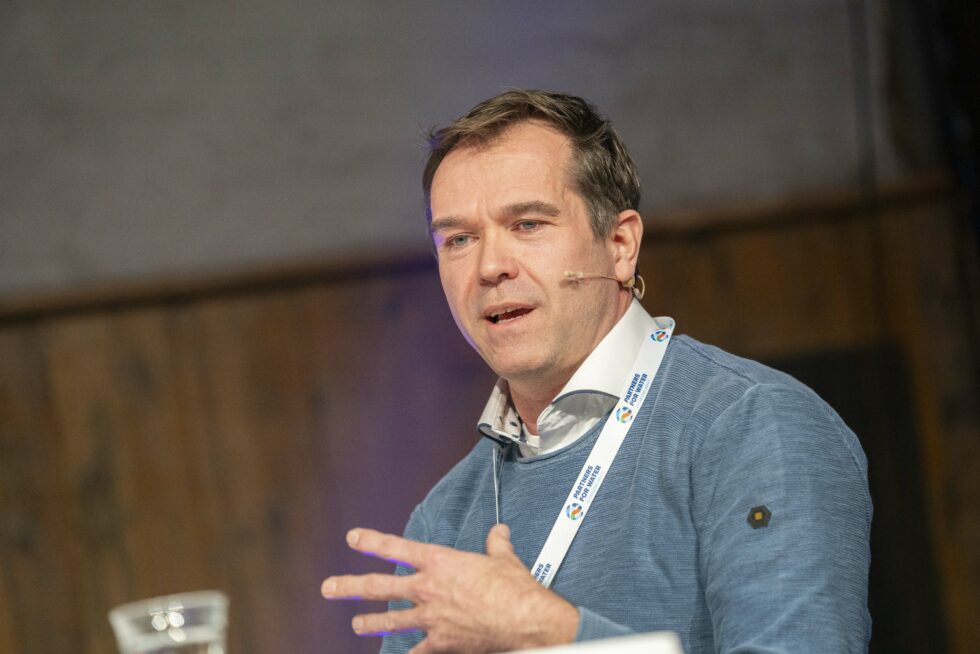STRENGTHENING WATER SOLUTIONS THROUGH BIODIVERSITY AND VICE VERSA
‘Integrating biodiversity into water solutions can both strengthen water management and address biodiversity challenges,’ states Nico Tillie from TU Delft. During the Waterproof 2024 event organised by Partners for Water, Nico co-hosted a deep dive session into biodiversity and water issues. We spoke with him and discussed the importance of biodiversity in water projects, how to integrate it, and what he achieved during the deep dive session.
As a landscape architect, researcher and lecturer at the Urban Ecology & Ecocities Lab at TU Delft, Nico works daily on integrating biodiversity into landscape and water solutions. During Waterproof 2024, he and his colleague Rosa de Wolf held a deep dive session on incorporating biodiversity in addressing water challenges. Below, he explains how the water sector can embrace this important component for water solutions.
The Importance of biodiversity
Our water quality, coastal defences and groundwater levels, among other things, depend on ecosystems, which can only provide their services if there is sufficient biodiversity,' explains Nico. Yet, when solving water problems, vegetation and biodiversity are often overlooked in the water cycle. Nico: ‘It is crucial that biodiversity forms a clear part of the approach when addressing water-related challenges; both for civil engineering and Nature-based Solutions.'
'The water-biodiversity nexus has implications not only for water issues but also for food, CO2, and other climate-related issues,’ Nico adds. ‘By approaching water challenges more broadly and integrating biodiversity into the water cycle, the benefits become of all these interfaces become more apparent.'
Understanding the local system
'Biodiversity is not only about the richness of species but also about habitat variety and genetic diversity. Together, they form a complex system.' Nico explains that in order to develop biodiversity-focused water solutions, it is important to understand the local system as a whole and adapt solutions as much as possible to the local climate and water conditions. But how exactly do you do that as a water engineer, for example?
Nico: ‘Understanding the local system can be done by initially mapping the water system and its associated vegetation, and then the surrounding habitat and local species. From that starting point, you can search for relevant solutions.’ He indicates that it is very valuable to make use of local knowledge, ecologists, and multidisciplinary teams in the process.
"Understanding the local system can be done by initially mapping the water system and its associated vegetation, and then the surrounding habitat and local species."
Pattern language
‘What will further promote biodiversity-focused water solutions is using clear and unambiguous 'language' when talking about these themes”, says Nico. ‘At Delft University of Technology, we have developed a MOOC (Massive Open Online Course) that helps water professionals better understand local ecosystems and biodiversity-related processes. In this course, professionals not only learn substantively about this theme, but they also become acquainted with the so-called 'pattern language'. This is a common, easy-to-understand language used for designing solutions. As a result, people from various backgrounds can work together effectively on biodiversity and water issues.’
From April, you can find the developed MOOC on the TU Delft website.
Deep dive session at Waterproof
‘Pattern language acts as a bridge between ecological and hydrological knowledge,’ explains Nico. He demonstrated this during the Biodiversity Deep Dive Session that he led with his colleague Rosa Wolf at Waterproof 2024. They presented a case study to the participating ecologists, water engineers, and other water professionals about an arid city in Mexico with water problems. The participants were challenged to find a solution using biodiversity as the starting point. ‘After mapping the water system together, the participants were able to jointly identify relevant applications,’ he adds explains.
Nico also showed the participants a case in which he used so-called ‘solution cards’. He says: ‘When we have similar design sessions with stakeholders, we support them with solution cards that present possible applications in a way that is understandable to everyone. This enables stakeholders from diverse backgrounds to jointly comprehend the water system and determine which applications are necessary to ensure biodiversity plays a central role in solving the problem.’ After the deep-dive session, he received a lot of positive feedback from the participants. ‘The people seemed to really understand and get a better grasp on ecosystems and biodiversity!’
Fundamentally integrating Biodiversity
"For me, biodiversity is an essential part of the water cycle because it can both strengthen water management and address biodiversity challenges. Looking ahead, I hope that this cyclical and systemic approach to biodiversity will become a fundamental part of technical solutions," Nico says. Reflecting on the positive responses he and his colleague received during Waterproof 2024, he is already taking crucial steps towards that integrated future.
Stay tuned
Don’t want to miss out on our next event? Subscribe to our newsletter to stay up to date!

